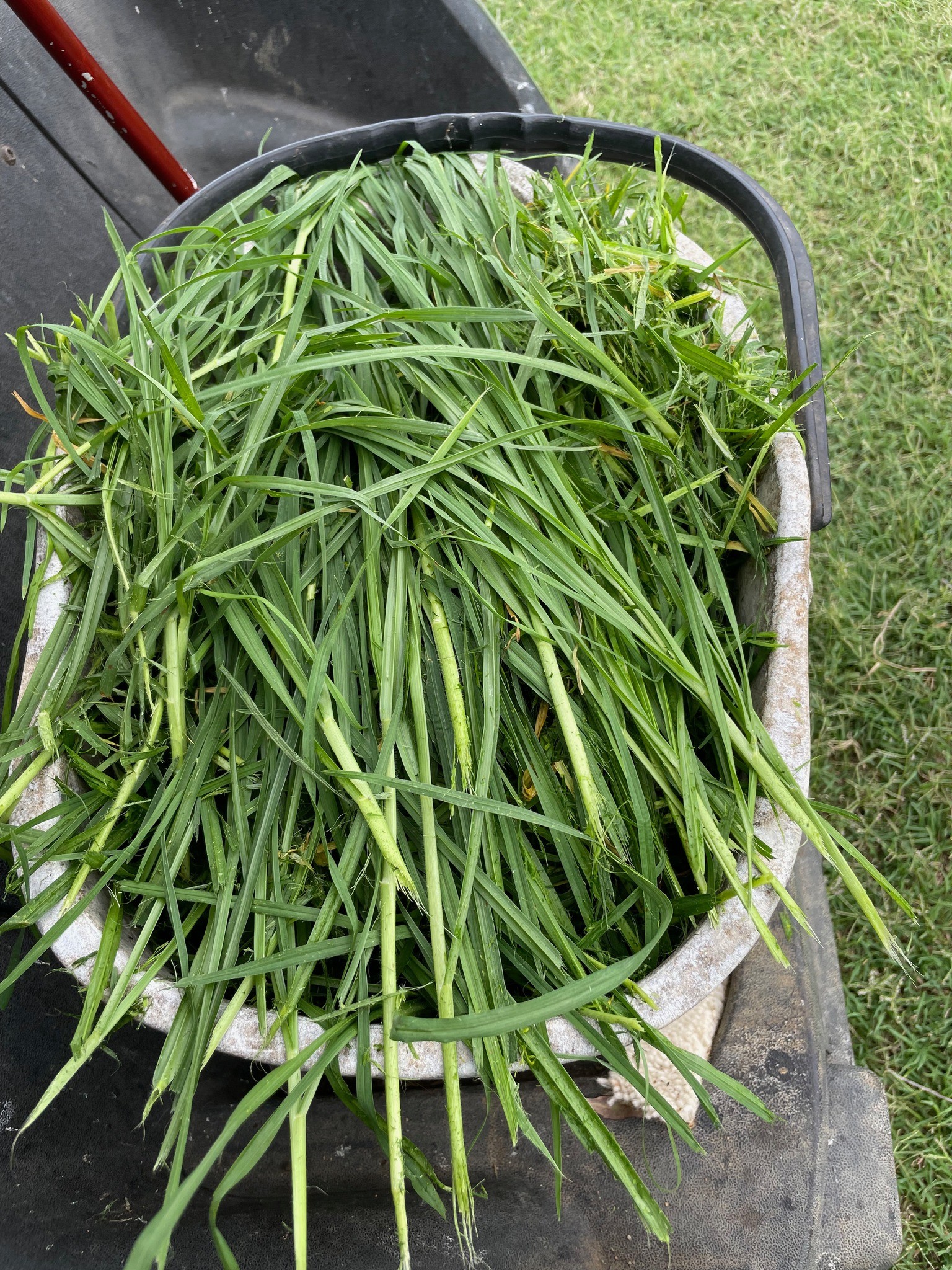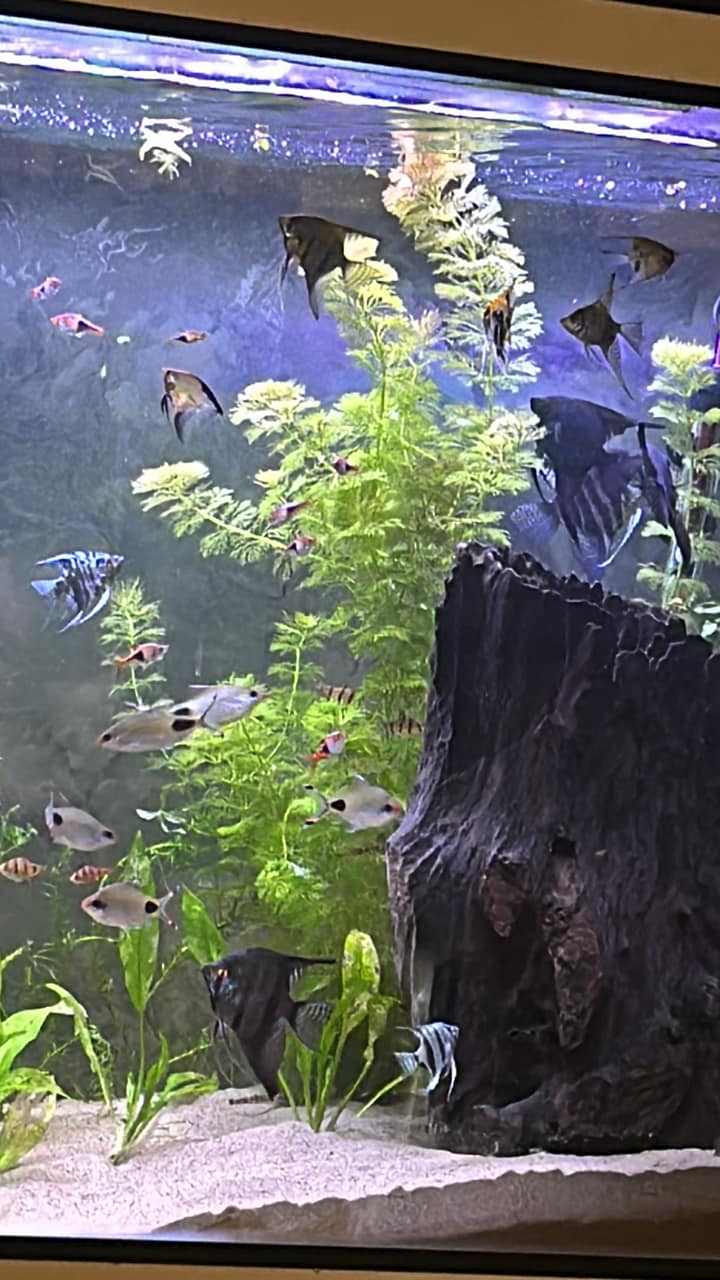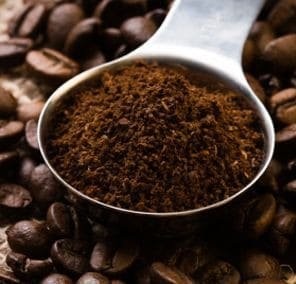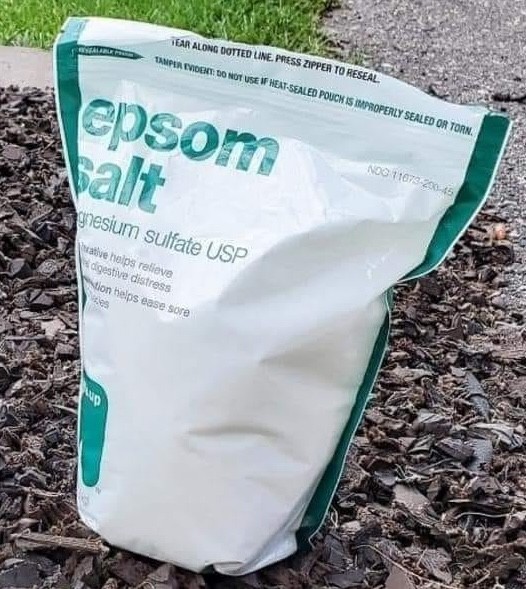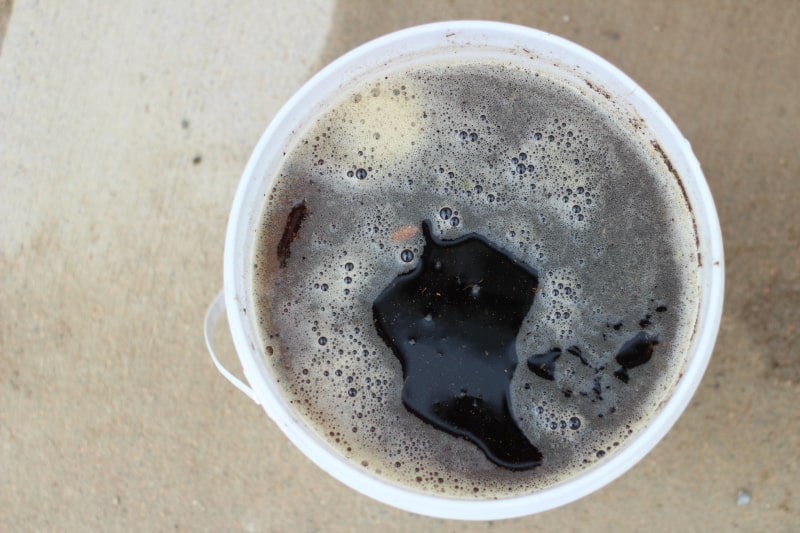Imagine fertilizing your lawn with a fertilizer made with ingredients you can easily find in your garden, kitchen, or even source locally. This is the beauty of homemade fertilizers. They are eco-friendly, practical, customizable, and affordable.
Homemade fertilizers offer an attractive alternative to commercial fertilizers that, despite being widely available, can be expensive, contain harsh chemicals, and are unfriendly to the environment.
Homemade fertilizers are easy to make whether you’re a beginner or experienced in lawn care independence.
In this article, we’ll cover the best homemade fertilizers for your lawn.
Best Homemade Fertilizers For Lawn
1. Grass Clippings Tea
Instead of collecting and discarding the grass clippings after mowing your lawn, use them to give your lawn a quick nitrogen boost to promote a lush, thick, green lawn.
How To Make Grass Clippings Tea
Ingredients
- Fresh grass clippings
- Bucket
- Water
- Strainer
- Stirring tool
Directions
- Put fresh grass clippings in a bucket and cover them entirely with water.
- Let the mixture sit for 3-5 days to extract the nutrients. Stir the mixture daily.
- Sieve the mixture to get the grass clippings tea. Discard the solid bits.
- Spray your lawn with the grass clippings tea.
- Lightly water the lawn.
Note
Preparing grass clippings tea isn’t the only way to use this mowing byproduct to fertilize your lawn. You can spread grass clipping over the lawn to serve as mulch and provide nutrients when they decompose.
2. Aquarium Water
Old fish tank water isn’t good for your fish, but do you know what it’s good for? Your lawn. It is loaded with nutrients from fish waste products, beneficial microorganisms, and uneaten fish food. The nitrogen in fish tank water aids grass growth.
Aquarium water also introduces beneficial microbes and organic matter into the soil. So, save the old water the next time you change fish tank water or clean the aquarium. Pour the water evenly on your lawn, paying more attention to stressed or yellow sections.
Caution: Do not use aquarium water on your lawn if it contains harmful chemicals, too many salts, or fish medications.
3. Coffee Grounds
The nitrogen, phosphorus, trace minerals, and potassium in coffee grounds will help your grass grow healthy. The powder also enhances the soil’s water retention and aeration.
The nitrogen, phosphorus, trace minerals, and potassium in coffee grounds will help your grass grow healthy. Coffee grounds also enhance the soil’s water retention and aeration.
Below are the different ways to fertilize your lawn with ground coffee.
Method 1: Dry Coffee Grounds
Sprinkle dry coffee grounds evenly across your lawn. After that, lightly rake your lawn to distribute the coffee grounds. Do not apply a thick layer of coffee grounds on your lawn, and ensure you rake the lawn after distributing the coffee grounds to avoid compacting the soil.
This approach distributes the nutrients gradually and conditions the soil.
Method 2: Make Coffee Grounds Tea
Put coffee grounds into a bucket and add water. After 24-48 hours, filter the liquid and spread it over your lawn. Coffee grounds tea offers a quick nutrient boost.
Read More:
4. Household Ammonia
You’ll have a potent fertilizer for your lawn if you use household ammonia correctly. Instead of going to the store to get an ammonia-based fertilizer, make a fertilizer tonic with your household cleaning products containing ammonia.
The nitrogen in ammonia will help make your lawn thick and green. Use ammonia that doesn’t have harmful chemicals for your lawn’s safety. Plain household ammonia (ammonium hydroxide) without additives will work.
How To Prepare Ammonia Fertilizer
- Mix a cup of household ammonia with a gallon of water and stir thoroughly.
- Spray your lawn with the fertilizer
Note
Your household ammonia’s chemical concentration will vary based on the brand, so always dilute it and apply cautiously. You can spray a small section first to see how the grass reacts. Also, do not overuse ammonia on your lawn because too much of it can cause nitrogen burn.
5. Epsom Salt
Epsom salt (magnesium sulfate) is popularly used in gardens as it helps boost plants’ health; it will also do wonders for your grass. The magnesium will aid your grasses’ chlorophyll production, thus giving them a deep green color and boosting photosynthesis. It also helps with nitrogen and phosphorus absorption.
On the other hand, sulfur will boost your grasses’ strength, resilience, and appearance. Fertilize your lawn with Epsom salt when the grass is actively growing.
How To Use Epsom Salt As Lawn Fertilizer
Granular Form
Scatter Epsom salt around your lawn by hand or with a spreader (5 cups per 100 square meters). After that, lightly water the lawn to help the Epsom salt soak into the soil.
Liquid Form
Dissolve Epsom salt (2 tablespoons) in water (a gallon). Apply the solution evenly on your lawn.
Note
You can also combine Epsom salt with ammonia to create a lawn nitrogen-rich lawn fertilizer. Do so by mixing Epsom salt (a cup), ammonia (a cup), and water (5 gallons). Alternatively, mix compost tea (a gallon) with Epsom salt (a cup) to boost your lawn soil’s health and microbial activity.
7. Compost Tea
After your compost pile matures, you can proceed to prepare compost tea for your lawn. By making compost at home instead of buying from a store, you’ll be able to control what ingredients go into the pile and, subsequently, the compost tea.
Compost tea will supply your lawn with the nutrients the grass needs to flourish. Moreover, it will enhance microbial activity and make your grass more resilient to pests and diseases. In addition, compost tea strengthens your lawn soil’s water retention.
How To Prepare Compost Tea
- Pour 4 gallons of water into a large bucket.
- Put 4 cups of compost (1 cup of compost for 1 gallon of water) in a mesh bag or an old pantyhose and tie it. Put the bag inside the bucket.
- Let the compost tea steep in water for 24 to 36 hours. Stir occasionally.
- Apply the liquid (compost tea) on the grass blades or directly onto the soil. Reapply it every 2 to 4 weeks.
Note
Use compost tea while it is still fresh. If you cannot use it immediately, store it in a dark, cool area for at most 24 hours. Fertilize your vegetables, flowers, trees, and shrubs with leftover compost tea to avoid wastage.
8. Seaweed
This natural fertilizer is rich in nutrients essential for grass and lawn soil health. They include nitrogen, magnesium, potassium, magnesium, calcium, phosphorus, and trace elements. Seaweed also encourages beneficial microorganisms, promotes nutrient absorption, and improves water retention.
How To Fertilize Your Lawn with Seaweed
Harvest fresh seaweed to fertilize your lawn if you’re close to the coast. After that, shred or chop the seaweed, rake it into your lawn soil, and then water it. Alternatively, dry the seaweed and spread it across your lawn.
8. Molasses
This byproduct of sugar cane processing contains lots of sugar and trace amounts of magnesium, iron, potassium, and calcium. The sugars feed the microbial life in the soil, making them active, thus promoting a healthy soil ecosystem. Molasses also add a bit of carbon to the soil.
Molasses enhances the color of grass and its vigor.
How To Use Molasses on Your Lawn
Dilute a quarter to half a cup of unsulfured molasses in a gallon of water. Stir the mixture to ensure the molasses is completely dissolved. Apply the liquid on your lawn and lightly water it afterward.
You can also mix 2 parts molasses with 1 part Epsom salt and add water (5 gallons). Apply this solution to your lawn and reapply after 2 to 3 months.
9. Beer and Soda
Beer and soda surprisingly make excellent lawn fertilizers. For instance, beer contains lots of nutrients that feed the soil microbes, bacteria, and grass. In addition, the high sugar content in sodas feeds microbes, thus stimulating them.
How To Fertilize Your Lawn with Beer and Soda
Mix a can of beer and soda (not diet soda), a cup of dish soap, and 10 gallons of water. Spray this solution on your lawn.
The dish soap aids in the absorption of the fertilizer and kills pests.
Note
Avoid Sprite and Coke because their high sugar content tends to upset the soil’s NPK ratio and lure pests.
11. Bone Meal
If your lawn could use a boost of phosphorus, try bone meal. While you can buy bone meal fertilizer from a store, consider making it because the process is pretty straightforward.
How to Make Bone Meal Fertilizer
- Save animal bones from a couple of meals and clean them.
- Line the clean bones on a baking tray and bake them (use at least 287 degrees) for about three hours.
- Grind the bones to turn them into a fine powder.
- Sprinkle bone meal fertilizer evenly on your lawn.
- Rake the lawn to mix the bone meal with the soil and water it lightly.
Final Remarks
Making homemade fertilizers is pretty straightforward, fun, and thrifty. You likely have the ingredients at home. Furthermore, it allows you to repurpose waste and be kind to the environment. So, consider opting for homemade fertilizers instead of their store-bought counterparts.

Hey there, I’m Derek Schew, a writer for Lawnholic.com, where we cover everything and anything related to lawns. As someone who’s spent countless hours tending to my own lawn, I’m passionate about sharing my knowledge and helping others achieve the perfect yard. From lawn care tips to product reviews, I’m committed to providing our readers with the most accurate and up-to-date information available. So whether you’re a seasoned lawn enthusiast or just getting started, I invite you to join our community and discover the joys of a lush, green lawn.

